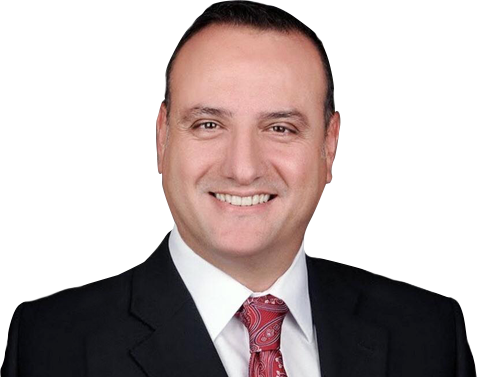
Ileal Interposition and Metabolic Syndrome
Metabolic Syndrome is a disease group which appears as associated with obesity and increases risk of heart attack more than expected. When we consider increase of obesity in Turkish people during last decade, we may explain the meaning of incidence increase of metabolic diseases.
Severe insulin resistance and Type 2 Diabetes, hypertension and dyslipidemia (increase on blood fats) are main problems appeared with obesity. These diseases or conditions are the most important causes for heart attacks due to cardiovascular obstructions.
Majority of patients with Type 2 Diabetes and morbid obesity also carry another findings for metabolic syndrome. Effective operations such as Biliopancreatic Diversion / Duodenal Switch applied for these patients eliminate obesity and diabetes as well as hypertension, bad cholesterol elevation and even visual disorders and mild protein losses from kidneys completely. This strong therapeutic effect of metabolic surgery appears faster than all classical drug therapies and insulin treatments and continue without decrease for years.
Control of metabolic surgery on diabetes and other accompanying diseases appears without any weight loss. In other words, patients return with normal blood glucose levels after hours following the operation. While no weight loss appears at this stage, this recovery and normalization status occurred become permanent by loosing excessive weights.
Absorption problems of metabolic surgery along with these strong effects are the most important obstacles before effective treatment of metabolic syndrome by surgery. After these operations, patients should use certain vitamin and mineral supplements continuously. Although compliance to these drugs is easier than previous treatments, most of our patients tend to ignore the operation because of this cause.
Why Ileal Interposition?
Ileal Interposition uses all mechanism of actions revealed by metabolic surgery until today. So, it is superior than Biliopancreatic Diversion / Duodenal Switch operation in terms of efficiency and diabetic control. The most significant difference from other operations is this operation never causes absorption disorder. Because, no section of small intestine is by-passed in ileal interposition operation. In other words, food is not separated from its natural passage. Foods taken pass by absorption from all small intestine sections and are converted into stool and discharged. All vitamins and minerals required for the body are absorbed and used completely in all patients who have ileal interposition operation.
Last and first part of small intestine is replaced in ileal interposition operation. Thereby, all foods come to the last part first during their passage along small intestine and after stimulation of hormones required for diabetes control, they continue their paths by passing along remaining parts of the small intestine for absorption of vitamins and minerals in the foods.
Foods progress with gall bladder and pancreas fluids required for absorption are completely digested and all vitamins and minerals required are absorbed.
|
|
Morbid Obesity |
|
|
|
|
|
|
|
|
|
Metabolic Surgical methods have been accepted by international organizations as the most efficient treatment in obese patients with BMI > 35 kg/m2 and they are recommended. Different operations are applied to treat diabetes and metabolic syndrome in patients with BMI < 35 kg/m2. Results of these operations are published with positive outcomes. However, operations which limit the absorption are performed with some modifications in patients with BMI < 35 kg/m2. As these operations are started to be applied by decreasing their absorption limitation efficiencies, this was required to prevent excessive weight losses for relatively slim patients. Application of metabolic surgery methods (mini gastric bypass, R-Y gastric bypass, biliopancreatic diversion etc.) which are applied for morbid obese patients with high achievement rates differently for relatively slim patients decrease their efficacies.
None of these problems make sense for ileal interposition. Because we may apply ileal interposition same no matter what the body mass index is. Ileal interposition is performed successfully for patients with BMI < 35 kg/m2 in different centers. In these slim patient group, no weight loss appears except several kilos. The most important superiority than other methods is that these patients need vitamin and mineral supplement during first 6 to 8 months after the operation.
Effect of Ileal Interposition on Metabolic Syndrome
Ileal interposition presents a therapeutic effect for diabetes and metabolic disorders such as hypertension, hyperlipidemia (elevation of bad cholesterol), protein leak in the urine (microalbuminuria).
Ileal Interposition and Hypertension
Hypertension is one of the most important factors which causes heart attack because of cardivascular obstruction. Sugarman reports a recovery by 70% in hypertension after gastric bypass operation applied for morbid obese patients. Scopinaro also reports that recovery on hypertension after biliopancreatic diversion applied for morbid obese patients is about 74% after 10 years. These recovery rates reported for both operations are significantly superior than drug therapies. However, absorption disorder appears as a side effect along with these benefits.
Depaula et al. have reported that recovery rates of hypertension on patients whom ileal interposition were applied was 90.5% without use of any drugs. Ugale et al have reported a complete recovery ration patients with hypertension by 90% without any drug use for 3 year follow-up after ileal interposition. None of these patients have absorption disorder and vitamin-mineral deficiency due to this. Recovery on hypertension appears just after the operation and becomes permanent during the following period. The strong and permanent effect obtained on control and elimination of hypertension becomes more significant and acceptable because no problem is experienced on absorption.
Ileal Interposition and Dyslipidemia
Dyslipidemia means disorder on blood fats in definition. Blood fat disorder does not mean high blood fat levels completely in all cases. Because while LDL (bad cholesterol) causes vascular obstruction, HDl (good cholesterol) provides to observe these vascular problems less. Therefore, LDL elevation causes a risk increase for vascular disease and lower level of HDL is not desired. Therefore, only hyperlipidemia which means elevation on blood fats is not a correct definition. Term of dyslipidemia will be used to define disorder in blood fats.
Dyslipidemia means elevation of LDL (bad cholesterol), TG (triglyceride) and Total Cholesterol and decrease of HDL (good cholesterol). Dyslipidemia is an important metabolic problem which increases atherosclerosis risk directly and also increases risk of heart attack. Efficient treatment of dyslipidemia and recovery on blood fats significantly decrease risk of coronary artery disease and infarction. Control of dyslipidemia creates an important step of main treatment targets for patients with Metabolic Syndrome and Type 2 Diabetes.
Significant decrease on serum triglyceride and slight decrease on total choelsterol levels are detected after operations which decrease gastric volume and gastric bypass. However, this partial normalization monitored after these operations including gastric bypass is completely dependent to weight loss and caloric restriction. Therefore, because of pouch and anastomosis enlargement seen in gastric bypass operations after 5 years, these effects may be eliminated completely.
|
|
Morbid Obesity Causes Metabolic Syndrome |
|
|
|
|
|
|
|
|
|
In normalization of blood fats; in other words long term control of dyslipidemia, Biliopancreatic Diversion or one of its form applied with Duedonal Switch are effective even during follow-ups over 10 years. Scopinaro reported that this effect appeared with Biliopancreatic Diversion is not related with fat malabsorption only, change on fat acid cycle between liver and small intestine also has effect on this. Fat acid quantity which decreases by breaking the fat acid cycle is met by consuming cholesterol deposits and increasing fat acid production. So, cholesterol level is decreased permanently. Scopinaro reports that triglyceride levels stay below 200 mg/dl even after more than 10 years. Good cholesterol levels stay over desired levels in all patients at the end of 10 years of follow-up. By decrease of total cholesterol in the blood, sensibility and count of receptors which recognize LDL (bad cholesterol) increase on cellular level. So, cells are obliged to use LDL cholesterol more as fat molecule to be used as building block. LDL cholesterol reduce to normal levels rapidly in a cycle.
Results in patients whom ileal interposition were applied are more satisfying than all. After ileal interposition operation applied on patents with metabolic syndrome, recovery on all measurements have been shown in all patients. De Paula has published results of 60 patients with metabolic syndrome who had ileal interposition and he showed that average Triglyceride level has reduced from 259 mg/dl to 97 mg/dl. Total cholesterol which was 215 mg/dl before has become 160 mg/dl after ileal interposition. LDL level which was 132 mg/dl before ileal interposition has been detected as 90.6 mg/dl after ileal interposition. All these reductions were statistically significant.
Ileal Interposition and Microalbuminemia
De Paula et al. have detected microalbuminemia in 45% of patients who had ileal interposition and macroalbumienmia in 8.3%. recovery has been observed in all patients with macroalbuminemia after ileal interposition. Patients whose microalbuminemia continue has regressed to 13.3%.
While ratio of patients whose “glomerular filtration rate – GFR” was between 60 and 80 ml/min during preoperative period was 23.3%, all of these patients has become to normal levels and increased GFR levela over 90 ml/minute.
Ileal interposition is a very special treatment option which provides the most efficient treatment option for all problems caused by metabolic syndrome and Type 2 Diabetes accordingly. Ileal interposition does not cause a malabsorption (nutrition disorder) process while obtaining this effect. None of the patients whom ileal interposition has been applied needs vitamin or mineral support after 6 to 8 months.
Ileal interposition affects same for all body mass index levels and slim patients do not loose weight at all. Actual strength and strong treatment aspect of ileal interposition is sourced from this feature.
Efficiency of Metabolic surgery methods on patients with Morbid Obesity does not appear same like slim patients. In fact, ileal interposition has been designed and is applied to treat diabetes and metabolic syndrome of patients whose body weight is normal or close to normal. This metabolic efficiency in relatively slim patients makes the achievement rate in patients with over weight and morbid obesity 100%.
It is essential to assess patients for insulin reserves independently from their body weights to obtain100% achievement rate. We definitely know that the most important triggering factor underlying metabolic syndrome is severe insulin resistance. Methods which suppress this resistance effectively and succeed to preserve this effect within years is so high that it can not be compared with any drugs or lifestyle change. This is a precondition for ileal interposition as well.
Therefore, we examine patients who will have ileal interposition in detail. This assessment is performed to examine all indicators of metabolic syndrome and diabetes. As a result, when it is shown that reserves that will be stimulated exist by ileal interposition, insulin resistance disappear rapidly and permanently after ileal interposition.
Many problems such as diabetes and diabetes-induced kidney disorders, visual disorders, vascular problems may be fixed by 100% if they are not damaged irreversibly. The cause for 100% recovery rate is each patient is different when they refer for treatment in terms of diabetes, period and severity of metabolic syndrome.
The important is to detect that the surgical treatment has 100% therapeutic on right patient and right time. This efficiency is more superior and permanent than all treatments.
If you have diabetes and accompanying metabolic problems, it is vitally important to decide before delay to be benefited more from the treatment. Do not hesitate to contact with us for sizes of your problems and treatment alternatives.
 English
English Turkish
Turkish

